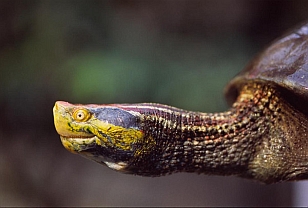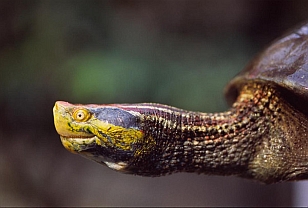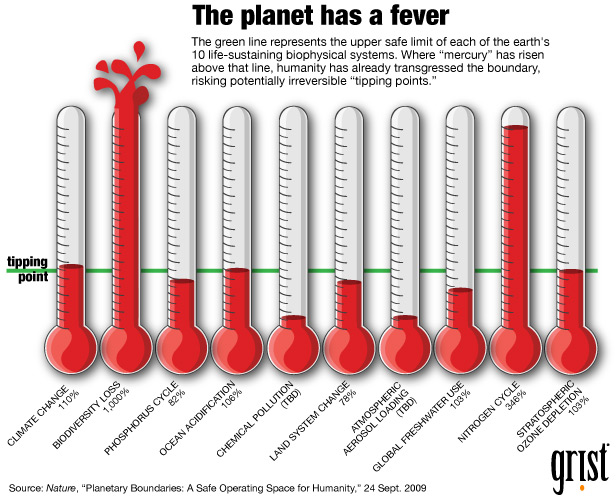 The threatened Red-crowned River Turtle of southeast AsiaPhoto: Peter Paul van Dijk, Conservation InternationalBiodiversity doesn’t get as much attention as it should now that climate change has become preeminent among environmental quandaries. But it’s important! Species extinction isn’t some boutique issue that’s distinct from the needs of humans. And building successful human dwellings isn’t disconnected from providing natural areas, as a delegation of international mayors said at Convention on Biological Diversity in Nagoya, Japan, this week. From Reuters:
The threatened Red-crowned River Turtle of southeast AsiaPhoto: Peter Paul van Dijk, Conservation InternationalBiodiversity doesn’t get as much attention as it should now that climate change has become preeminent among environmental quandaries. But it’s important! Species extinction isn’t some boutique issue that’s distinct from the needs of humans. And building successful human dwellings isn’t disconnected from providing natural areas, as a delegation of international mayors said at Convention on Biological Diversity in Nagoya, Japan, this week. From Reuters:
While green groups at a U.N. environment meeting in Japan focused on the need to save rainforests and oceans, mayors at the talks said conserving nature in cities was equally vital.
“We must work on two levels. First, the preservation of ecosystems but also the integration of biodiversity in the city and in all policies,” Evelyne Huytebroeck, the Brussels’ region minister for environment, told a news conference.
“Biodiversity must be seen as part of the solution for the city, for sustainable urban planning, not as a problem.”
… U.N. studies during the talks in Nagoya have highlighted the value of ecosystems to livelihoods, such as insects that pollinate crops, trees that clean the air and plants that are the source of food.
“Carbon blindness” is the fallacy that we can solve the greenhouse-gas problem while ignoring the other ecological limits our planet is bumping into. A seminal study last fall in Nature put climate in perspective of 10 biophysical systems crucial to human health — and it found biodiversity loss more troubling than any other:
To put it another way, the latest IUCN Red List, an annual checkup on the health of the world’s vertebrate species, reveals that about one fifth of them are threatened with extinction. Good times.
The mayors in Nagoya argue that cities have a role to play in response. Huytebroeck notes that Brussels requires flat roofs of a certain size to plant rooftop gardens. A nifty program in Vancouver, British Columbia, invites citizens to adopt traffic circles and median strips and turn them into gardens. And cities help simply by fitting a lot of people into small amounts of land — although the food and resources they consume can still come from threatened areas.
Regarding the rest of the biodiversity summit, Earth Journalism Network writer James Fahn reports that the 193 participating countries are largely taking a “No, you go first” approach to conservation, putting national interests ahead of natural ones and echoing the mentality that sank the COP15 Copenhagen climate talks last fall.
It’s probably also a preview of the attitudes that will prevail for the COP16 talks in Cancun this December, which has already been treated to a flurry of obituaries. High-stakes environmental summits are not the most heartening displays of nature, human or otherwise.




